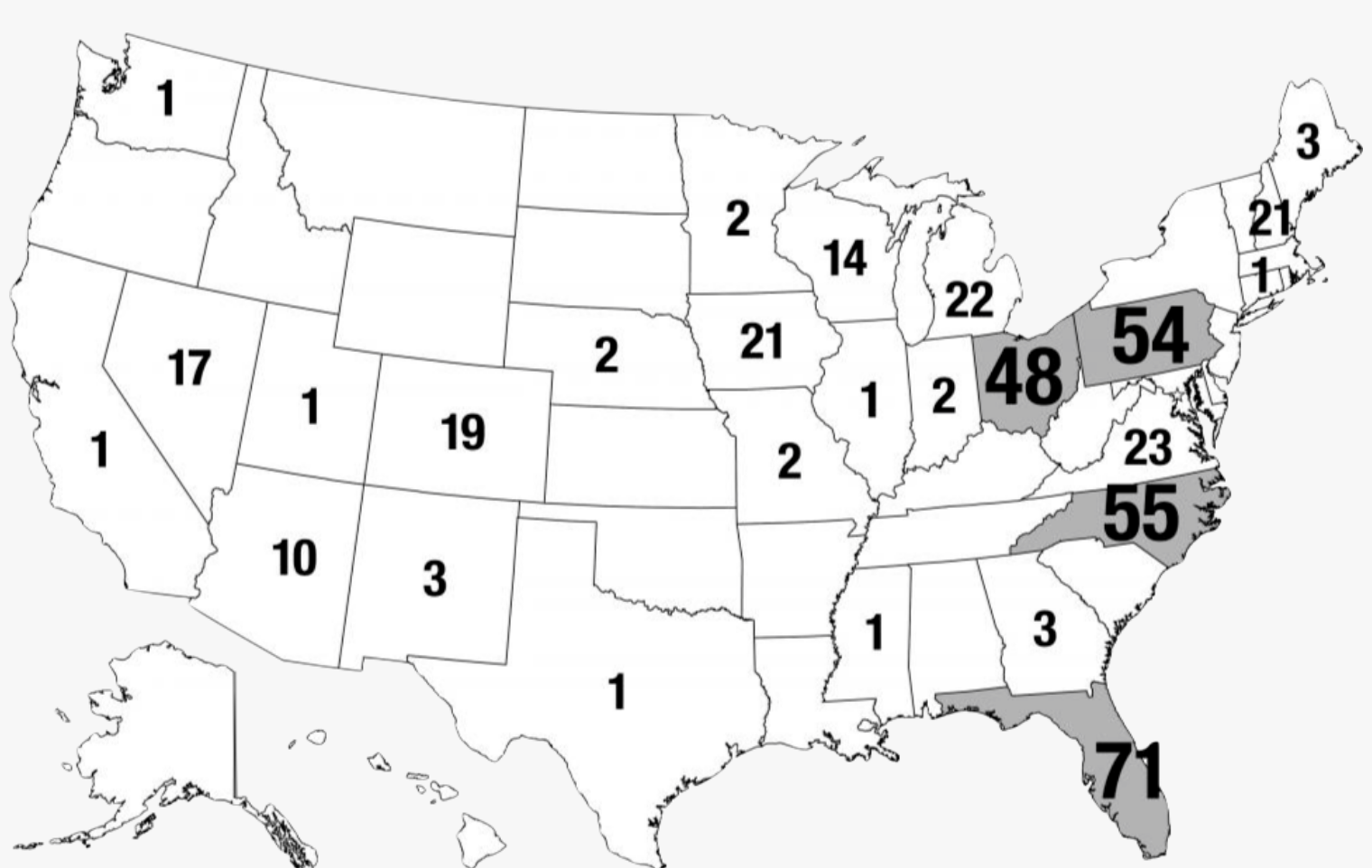This is well known: from David Leonhardt in NYT:
“As Gallup’s Lydia Saad notes, a large majority of Americans support both ‘protecting abortion rights when pregnancy endangers a woman’s life’ and ‘keeping abortion legal when pregnancy is caused by rape or incest.’”
No president could oppose this majority view and still win the national popular vote.
But the national vote and views widely held in the nation do not matter in selecting the president. We are not one country when it comes to electing the president. In that activity only a few impassioned factions of voters in a handful of states matter.
Opposition to abortion even in the direst circumstances is found principally among evangelicals. For stochastic reasons evangelicals compose a large percentage of the population in the four critical swing states that now determine the choice of the president (Florida, Pennsylvania, Michigan, Wisconsin). Evangelicals also have an exceptionally high turnout rate, making them an estimated 20-40% of voters in these key states. They vote overwhelmingly for the candidate who inveighs against abortion. That is the incumbent, as it was George W. Bush, George H. W. Bush and Ronald Reagan.
The impact is seen in two respects: who gets elected president in close elections like 2000 and 2016 and who gets appointed by Republican presidents to the Supreme Court.
A major reason Hillary Clinton did not carry the crucial swing states is that she has been a lifelong advocate of choice. (The million words written about her personality as the explanation for her loss of the plurality by narrow margins in these four states are a different example of bias against women.)
The result is that the view of a large majority of women and men on the issue of abortion have had very little impact on Republican presidents since 1980.
To be reelected, the current president for purely political reasons feels he must appoint people to the Supreme Court who do not necessarily honor the constitutional right of women to control their bodies even when raped or at risk of dying.
Because he wants to be reelected, the current president is unlikely to oppose the draconian anti-abortion laws just passed on this issue in a few states. These states are taken for granted in the general election already, but he will be motivated to seek the votes of evangelicals in the swing states. That is the reason he is not likely to have the Solicitor General oppose these laws. That is the reason he will not speak against these laws even though the large majority of Americans oppose them.
This bias against abortion even in dire situations stems from the electoral system.



